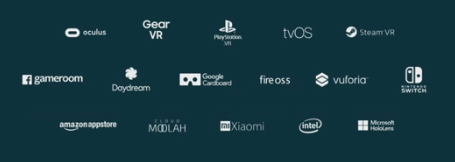Unity’s GDC 2017 Keynote happened in San Francisco earlier this year. Unity continues to be a mainstream tool for building games and graphic centered solutions. Unity continues on its growth path as well as with its expansion. Collectively, Unity games make up 38% of all mobile games globally. Unity games were downloaded 16 billion times in 2016. In the last quarter, Unity games reached 2.6 billion unique mobile devices. That’s up a billion devices from a year previous.
Unity currently supports over 30 different platforms, which include iOS, Android, Windows Phone, Tizen, PlayStation VR, Intel, Microsoft HoloLens, Linux, Windows Desktop, PS4, Oculus, Xiaomi, Gear VR, Xbox One, Android TV, PS Vita, Facebook GameRoom, Nintendo 3DS, WebGL, tvOS, Smart TV, Wii U, Stream VR, Daydream, Vuforia among others.
In Unity 5.5 last year, they released features such as:
- GPU instancing iOS and Android
- CPU Profiler Timing view
- Codeless IAP
- Custom Splash screen
- PhysX 3.3.3
- Collaborate Beta
- Microsoft Holographic support
- Cloud Moolah support
With 5.6, they are adding to that features such as:
- Vulkan
- Progressive Light Mapper
- New Video Player supporting 4k
- Physics Debug Visualization
- Mac Editor on Metal
- Improved 2D tools
- iOS native error monitor
- New Navmesh tools
- Facebook Gameroom support
- DayDream support
- Cardboard (iOS & Android) support
While it would be easy for me to dig into each of these features as well as describe more about what’s new with Unity, it would be clearer to let the Unity leaders tell you. Below is the embedded keynote from GDC 2017:
# # #



